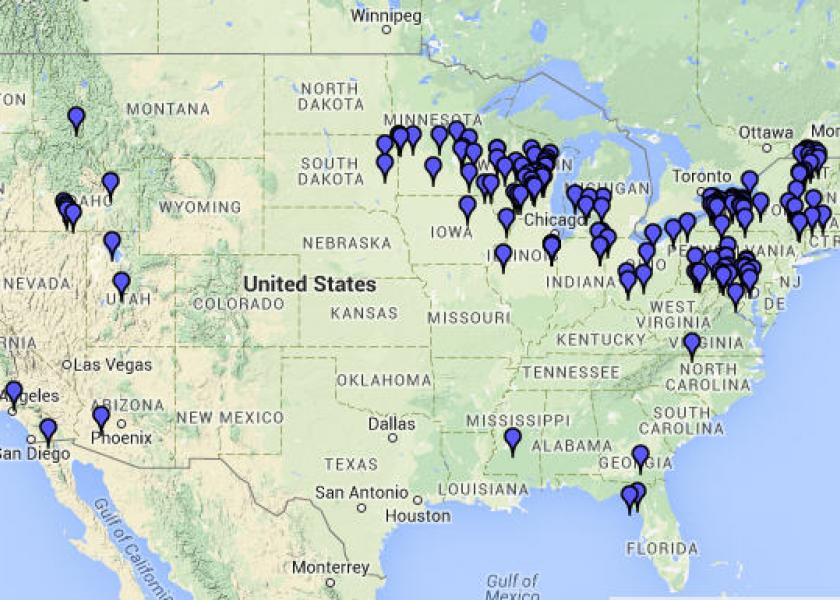U.S. Dairy Digester Portfolio Continues to Grow

The dairy industry leads in the number of commercial anaerobic digesters on U.S. livestock operations.
Among the 202 anaerobic digesters commercially operating on U.S. dairies as of January 2015, the following states have the highest number, according to the Environmental Protection Agency’s AgSTAR program:
| Wisconsin | 37 |
| New York | 32 |
| Pennsylvania | 23 |
| California | 20 |
| Vermont | 16 |
| Ohio | 10 |
| Minnesota | 8 |
| Washington | 8 |
| Indiana | 7 |
| Michigan | 7 |
| Oregon | 7 |
| Idaho | 6 |
The U.S. swine industry accounts for the second-highest number of commercial anaerobic digesters, with 39.
Two new biogas ventures near Bakersfield, Calif., will boost California’s dairy digester numbers to 22.
Digester projects will get underway next month at Lakeview Farms Dairy of Bakersfield, Calif., and West Star North Dairy of nearby Buttonwillow, Calif. They were the only two dairies among the 12 renewable energy projects awarded in March by the California Energy Commission (CEC), the state’s primary energy policy and planning agency. The 12 awards, totaling $21 million, followed a competitive application process.
The two San Joaquin Valley dairies received CEC grants of $4 million each to help fund innovative biogas projects that will generate electricity, reduce methane emissions and, in the case of one, launch the state’s first “hub-and-spoke” dairy digester cluster.
The dairy projects are slated to reach completion in March 2019. The electricity from both dairy’s digesters will be sold to PG&E, California’s largest energy utility.
“These projects aim to generate and sell renewable electricity to PG&E through long-term energy contracts or Net Energy Metering programs, helping to achieve the state’s renewable energy goals and making both dairy digester, renewable energy projects more affordable,” says Gina Barkalow, CEC grant manager for the projects.
By 2020, 33% of California’s electricity must come from renewable energy.







